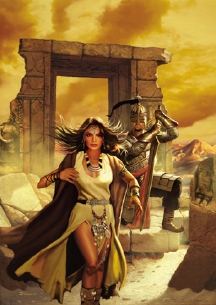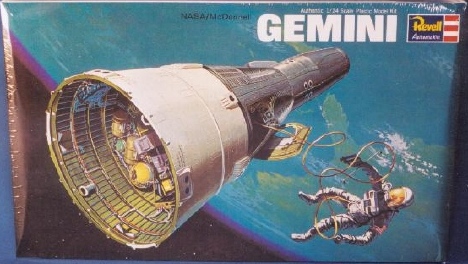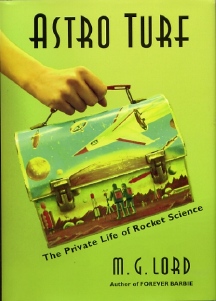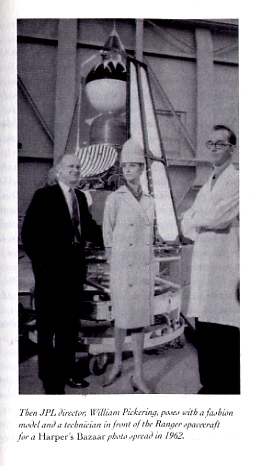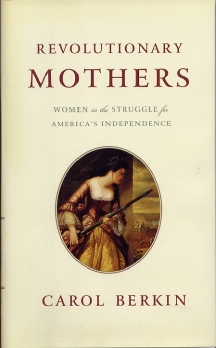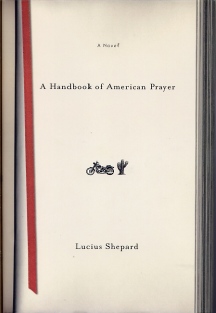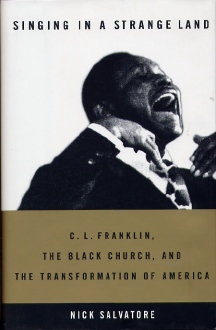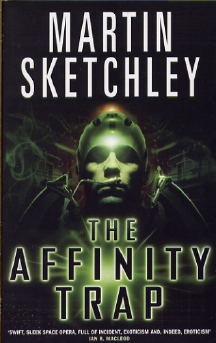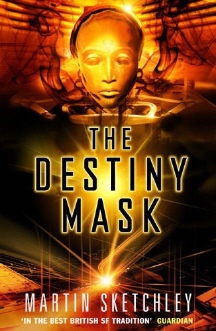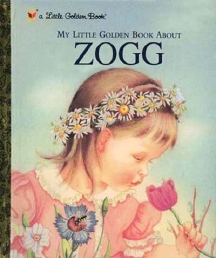|
|
|
This Just In...News from the Agony Column
|
02-11-05: Erikson & Miéville, Night Shade and Tor |
|||||||||
Hard
News and Hard Covers
But I was a bit worried that there would never be a hardcover version of book two, 'Deadhouse Gates' because Tor sent me a trade paperback of the book, and even my usually well-stocked local bookstore, Bookshop Santa Cruz had only the trade paperback edition on their shelves. But CM wrote to tell me that you could get a hardcover copy with the UK art at *.* and probably, therefore, via your independent bookstore of choice, particularly if it's a SF&F specialty shop. Jeremy wrote to tell me that Borderlands Books, in SF has a few that will likely sell quite quickly. I'd hazard a guess that these will quickly achieve the value of the first editions of the George R. R. Martin 'Songs of Ice and Fire' novels, which now go for a minimum of a hundred bucks a pop. The scope is similar and I actually prefer Erikson's world, simply because it has more monsters and is more surreally supernatural than Martin's. This is akin to discussing the difference between emeralds and rubies. Some people like red better than green. But a jewel is a jewel. CC also wrote to tell me that Steve Youll, who did the cover for 'Gardens of the Moon' for Tor, had also done a cover for 'Deadhouse Gates', which I reproduce here for you visual entertainment only, mind. While I really like Youll's work, I tend to prefer the UK cover that Tor chose, as it's a bit less embarrassing to buy. I mean, let's face it. The hubba-hubba covers may sell the books to what publishers conceive of as the typical fantasy audience, presumably adolescent males. Or males of adult age who never left adolescence. But the audience for these books, as with the Martin series, is a bit more sophisticated. Or if not, then they're probably married to someone who is. In any event, it's nice to see that Tor has chosen as a default setting the tasty stylings from the UK cover.
But the Erikson news doesn't stop there. For those who missed the PS Publishing versions of his two Malazan novellas, 'Blood Follows' and 'The Healthy Dead', Night Shade Books is putting out new hardcover versions later this year. The trade editions will be $25.00 and the limited $45.00, the latter offering a leatherbound copy. Artwork for both will be by Mike Dringenberg. He did the art for 'Sandman: The Endless Scroll', and some 'Magic: The Gathering' card sets. I found this image from an 'Art as beverage' show at the Javarama Coffee House in Alameda. I rather like it, though following up the original art by Les Edwards/Edward Miller is going to be tough.
How will they top that? Well, the lettered edition, going for a breathtaking $500 will include "exclusive artwork", presumably in addition to the artwork in the limited. Further, each copy will be "individually remarqued by China". I presume that means he'll go through it and drop in some additional drawings. When you're talking about this kind of extravaganza, it's certain that each copy will be bound in leather, traycased, etc. Of course, with a price tag like that what it really needs is something that will render the cost invisible to those with whom you share a dwelling -- a spell, or a piece of tech from the gritty streets of New Crobuzon. Anything to suggest that the hulking, gorgeous chunk of leather and pages was a remaindered title. Alas, experience suggests that if our other halves are as sophisticated as we know them to be, they'd see through just about anything. And presumably, any reasonable human would understand why we must have these books. It's obvious, innit? I mean, we're talking about a limited edition of one of our favorite books. We'll be lucky to even get a copy. After all, good news travels fast. |
|
02-10-05: M. G. Lord Rolls Out the 'Astro Turf' |
||||||||
The
Private Life of Rocket Science
By the time I moved to Southern California, I was in the fifth grade, and it was 1969. We were just about to land on the moon, and as a fifth grader during those bracingly optimistic and terrifyingly pessimistic times, I was a little bit confused by the mixed messages we were getting. On one hand, I loved the hell out of the space program. I built every Revell model of every actual rocket out there. I had the huge Apollo launch pad kit, the large Gemini capsule, a couple of X-15's and numerous versions of the LEM -- that's Lunar Excursion Module, not the famous Polish science fiction author. In the sixth grade, with help from some friends, I built an enormous faux capsule for the classroom. I was (and still am) a hopeless geek. On the other hand, once a month the air-raid sirens would go off and rather than rejoice in space travel, we'd hide under our desks from the results. Those drop drills left as indelible a mark on my soul as the moon landings, a yin to their yang. I was a fan of both sides of the divide as expressed by Stanley Kubrick -- 'Doctor Strangelove' and '2001'. Utopia and apocalypse. Since I was in Southern California, I managed to lay my hands on a number of books issued by the Jet Propulsion Laboratory. One of my most prized possessions was a huge-format, slick book of photographs from the Ranger moon landings. I'm not sure how many people remember them now, but the idea with the Ranger moon probes was to mount a camera on a spacecraft and then send the spacecraft to the moon and have it take pictures that it sent back up until it crashed on the lunar surface. It seems crazy in retrospect, like Project Orion. So the book I had was sort of -- intentionally, I guess now -- a real-life flip book whereby you could experience a crash on the lunar surface in about a minute and a half. Damn, I wish I could find that book now. It's probably somewhere at my mom's house in Victorville, near Vandenberg Air Force base, where the recent launch of SpaceShipOne gave us cause for cautious optimism. The first experience of my adult years to re-capture that pre-teen space exploration vibe was the 1997 Mars Sojourner mission. When that thing landed in July, I was glued to the TV, blasting Hawkwind's 'Uncle Sam's On Mars', and I recalled the hours I spent awake in 1969 to watch us walk on the moon. Less than ten years to the moon, and more than thirty years to Mars. Still, I was stoked.
Lord's book weaves her memories of growing up in SoCal with an absent father and a dying mother, the history of the Jet Propulsion Laboratory and her love of science fiction. As the only child, a daughter, she wasn't supposed to be a rocket scientist herself. She tells the story of the founder of the Jet Propulsion Laboratory, Frank Malina. He briefly flirted with Communism and was driven out of the country even as Project Paperclip hustled in Nazi scientists like Werner Von Braun. Her love of science fiction helped carry her through some tough times. She read Ursula K. Le Guin's 'The Left Hand of Darkness' shortly after her mother died from cancer, a year after it came out, probably in the same mass-market paperback edition that I read. She even mentions Philip K. Dick, though she associates the plot of 'Martian Time Slip' with the title 'The Three Stigmata of Palmer Eldritch'. She meets and talks with Martin Marietta engineer and science fiction author Gentry Lee, who co-wrote several 'Rendezvous With Rama' sequels and asks him if the ultra-competent rocket-scientist/runway model main character Nicole Des Jardins is his ideal woman.
And when his seventh son has seven sons? We haven't got that far into the future, I suppose. Here in the present, which is in fact the setting of many of Philip K. Dick's very futuristic tales of space travel and hallucination, we have Lord's book, with a picture of Gentry Lee in full hippie-in-a-suit mode and looking like prog-rock star Geddy Lee. Walker has produced a very beautiful book here, chock full of great pictures that will zip readers old enough back into their younger selves. It's all very strange and strangely moving, this looking back at our youth when we looked forward to a future that turned out to be very different from the present we have. Turns out the present we have now isn't all that different from the present we had then. Lord's book looks to capture that strange emotion that happens when our apprehension of the future collides with our comprehension of the present. It's poignancy reversed, turned inside-out like one of the Möbius strips I made back then while competing in the Math Bowl. I won a prize, I remember, a weird little math game with cards and oddly shaped dice that presaged the kind you get with D&D RPG games. Fortunately, or unfortunately, I was a bit too old to get caught up in the D&D craze, and the video game craze. Apparently, I'm not too old to get into the book craze, or at least, not too old to leave it behind. Do I ever get to grow up? Do I ever want to grow up? |
|
02-08-05: Lucius Shepard's 'Handbook of American Prayer'; Nick Salvatore is 'Singing in a Strange Land' |
|||
Messiah,
USA -- and a Conversation With Lucius Shepard
Hot on the heels of his science fiction / surreal horror short novel for Night Shade Books, 'Viator', he's helping veteran publisher Avalon Books launch a new imprint Thunder's Mouth Press with yet another style of surreal modern Americana, 'A Handbook of American Prayer' (Thunder's Mouth Press / Avalon Books ; September 4, 2004 ; $22.00). Once again, Shepard throws genre and caution to the winds as he combines what looks to be a gritty prison noir with elements of above-mentioned magic realism to create another who-cares-what-you-call-it so-long-as-you-read-it-right-now novel. Wardlin Stuart is no great shakes when he kills a man in a bar fight. He gets ten years for manslaughter, and spends his time there composing poems and prayers addressed to no god on the regular roster, not capital-g God, not Jehovah, not Allah. He's not aiming, after all, for miracle, but rather some small creature comforts and conveniences. But he gets what he wants before he comes to realize that no matter how small, miracles are miracles and celebrity is celebrity. Emerging from prison, he finds himself on a collision course with a fundamentalist minister of national renown. That's not a big surprise, since by definition, fundamentalists tend to think they own the one and only capital-g God, lock stock and two smoking barrels. However, they don't expect their ol' capital-g God -- or any other, including that of Wardlin Stuart -- to show up on the mean streets. But Stuarts seems to have broken the mold and that's a potential problem for lots of people, including Stuart himself. 'A Handbook for American Prayer' has been compared favorably to a recent ten-best favorite of Terry D'Auray's, Percival Everett's 'American Desert'. It's packaged in a clean jacket and at Bookshop Santa Cruz it was shelved under literature. And given the packaging, who but an astute reader, familiar with Shepard's oeuvre would have filed it anywhere else? And in fact, to my mind, anyone familiar with Shepard would have done the same. Shepard just writes great books, no matter where they may happen to be shelved. Who knows where Shepard will slip to next? What might happen, were someone at the New Yorker to get a hold of this book, and put it in the 'Briefly noted' section? Or more appropriately, were they to find it, plunge into Shepard's huge and diverse catalogue and give him the space he deserves. As it stands, Shepard's latest novel can be found under literature. Where, to my mind, all of his work belongs. I had the opportunity to speak with Lucius on Monday, courtesy Jeremy Lassen of Night Shade Books and under the fine auspices of KUSP's Talk of the Bay. Please give money to KUSP. As for Lucius... He told me of his adventures in Honduras amongst the lobster divers and cocaine lords, and how his work as a bartender led to 'A Handbook of American Prayer'. Readers can enjoy the MP3 version or the RealAudio version of this interview. |
|||
C.
L. Franklin, The Black Church and The Transformation of America
So when I first saw 'Singing in a Strange Land: C. L. Franklin, The Black Church and The Transformation of America' (Little, Brown / Time Warner Book Group ; February 3, 2005 ; $27.95), I'll admit as to first wondering what the heck was going on. But it didn't take long to figure out that once again, what I had in my hands was one of those great biographies that read like compelling novels. Here's the gist of the story. C. L. Franklin was born in 1915, in Sunflower County, according to many the birthplace of the blues. His mother was religious, his father was gone and his stepfather was a farmer. Though he was needed in the fields, Clarence LaVaughn Franklin felt called to preach, and preach he did. He incorporated gospel music as an integral part of his preaching style and rose to national prominence and fame. He was flashy and flawed, spiritual and smart. He was by no means perfect, but he brought earth, kicking and screaming in the aisles of his churches, closer to heaven. 'Singing in a Strange Land' chronicles his rise to fame, the struggle for the heart of black America, the rise of gospel music, of soul, of R & B, and even his daughter, a girl named Aretha. All this is well and good, but it wouldnt mean anything if Salvatore, who wrote 'Eugene V. Debs: Citizen and Socialist', didn't bring the kind of passion to his biography that Franklin brought to his preaching. (And you have to love a guy who writes a biography of Debs. It's inconceivable these days that someone who called himself a Socialist could rise to national prominence.) Salvatore's biography reads on any random page like gripping novel of mid-twentieth century America, raw, exciting and profoundly involving. Nothing cleanses the reading palate like a great non-fiction biography. Moreover, no matter what the subject, non-fiction always illuminates all the fiction we read, giving us as readers a sort of measuring point, a point from which to establish a clear perception on the unreal. And the bottom line is always the writing. Some biographers just write it out, dutifully, and that's often all you want as a reader. But some lives call for a biographer to go further than the facts, to find the emotions behind the facts. Some works of non fiction cannot simply speak. They need to sing, and 'Singing in a Strange Land' just belts it out. Here's a book you don't just read. This is a book, you hear, and once you listen, chances are you wont stop till the song is over. |
|
02-07-05: Martin Sketchley Springs 'The Affinity Trap'; Jason Youngbluth's 'My Little Golden Book of Zogg' |
||||||
A Third Sex
Well, at least sometimes it seems that way. I'm sure readers are aware of what I'm talking about. You know, the scenes where after bickering and fighting the man and woman of the piece find themselves alone through some utterly absurd plot contrivance and then...well, get your copy of the 'The Best of Letters to Penthouse' and look for one which starts, "You're not going to believe what.." and try, just try not to compare. (And while I'm at it, please note that your favorite Internet giant allows you to search inside each and every one of the twenty-one volumes of this that currently exist. You know, I thought I was making up the title! ...Really!) Well, just to throw a little monkey wrench in the faces of the Publishers Who Be, Martin Sketchley has introduced 'The Affinity Trap' (Simon and Schuster UK Mass Market Paperback ; March 7, 2005 ; £6.99). The first novel in what he calls "The Structure Trilogy" appears to be a tight and compact entry in the growing and exciting oeuvre of British Space Opera. Last year was the trade paperback debut, and the mass-market paperback just landed in the top shelf. For those of us who can't get enough uh, UK space opera, this appears to be just the ticket. And as for that obligatory sex scene, well, let's just say that Sketchley has opened up his options a bit. By adding a third sex to the equation. Of course, any novel that includes an alien race with three sexes obviously has something slightly different on its mind, and any sex scenes immediately depart the realm of spurious and enter the rarified realm of justified and required-by-the-plot. This is not something that is usually true of a sex scene. The novel begins when Military Intelligence Officer Alexander Delgado is sent to fetch Vourniass Lycern, a "conosq" of the Seriattic race. She, uh, he, uh, let's just call no, wait, it's a her, she holds the key to peace between humanity and Seriatt. As long as we're at peace, General William Myson is free to conduct his ever-so-profitable illegal arms trade. Delgado's position was once a respected and powerful post, but as Myson rose in stature, Delgado has been reduced to a name-only officer who acts more as a servant. He sees in this task the chance to reinstate not only his name and his position to levels of greater prestige, but to engender change on a wide scale. Clearly this is not an agenda that anyone other than Delgado would approve of. But Lycern offers Delgado chances of change that he's not even able to comprehend, and opportunities for an encounter that is erotic and disturbing. When aroused, she's liable to surround her mate with an amniotic sac, giving the "wet spot of the bed" debate a whole new level of urgency.
Taking a look at Sketchley's home page, US readers can find a bit of very interesting news. Lou Anders, who edited the well-received 'Live Without A Net' anthology and the first issue of the revived 'Argosy', has been chosen to helm Pyr, a new science fiction imprint of skeptic-friendly Prometheus Books. Sketchley's novel, we're told, is slated for US publication in late 2005 or early 2006. No word yet as to format, though I'll take this opportunity to ask for a hardcover first, since this seems just the kind of book you want to, uh, wrap yourself up in on a cold winter's night. And having introduced a third sex in his first novel, one wonders what Sketchley has in store for readers in the next two segments. Probably the kind of arrangement that will break more unwritten rules than it obeys. |
||||||
A Pretty Parasitic Invasion
"I was in a supermarket recently searching for a brown mustard-and-conditioner in one. It was while I was reading the ingredient label on a jar of Gouldens Dry Scalp Formula that I looked to the children's book rack and there spied the title "My Little Golden Book About God." Now as anyone knows, my interest in life's headiest metaphysical mystery has led me on some strange journeys; from the highest mountain peaks of Peru to snort crystallized alpaca urine with an Incan shaman to the sewers beneath Istanbul to read 900-year old graffiti scrawled by the heretical Saint Phoqallyall. Having found no theological resolution in these rarified encounters I have left the door open to the chance that sublime truth may be found where I least expect it. So it was with genuine anticipation that I opened the book, curious to know what the people at Little Golden Books believed small children who stick Beeferoni up their noses could absorb about the Inscrutable One. You cannot imagine my horror, however, when my eyes met pages filled with saccharine, pastel artwork depicting cold-eyed androids that were clearly not of our realm. In a Beautiful Mind moment of schizophrenic clarity I saw the book for what it was: not a gentle introduction to life's most profound curiosity, but a primer for the parasitic offspring of an invisible invasion! For the safety of our race (if any still remain) I have translated this book in the hopes that a resistance may arise. Read the baby powder scented Final Solution of our enemies from beyond, otherwise known as..." |
